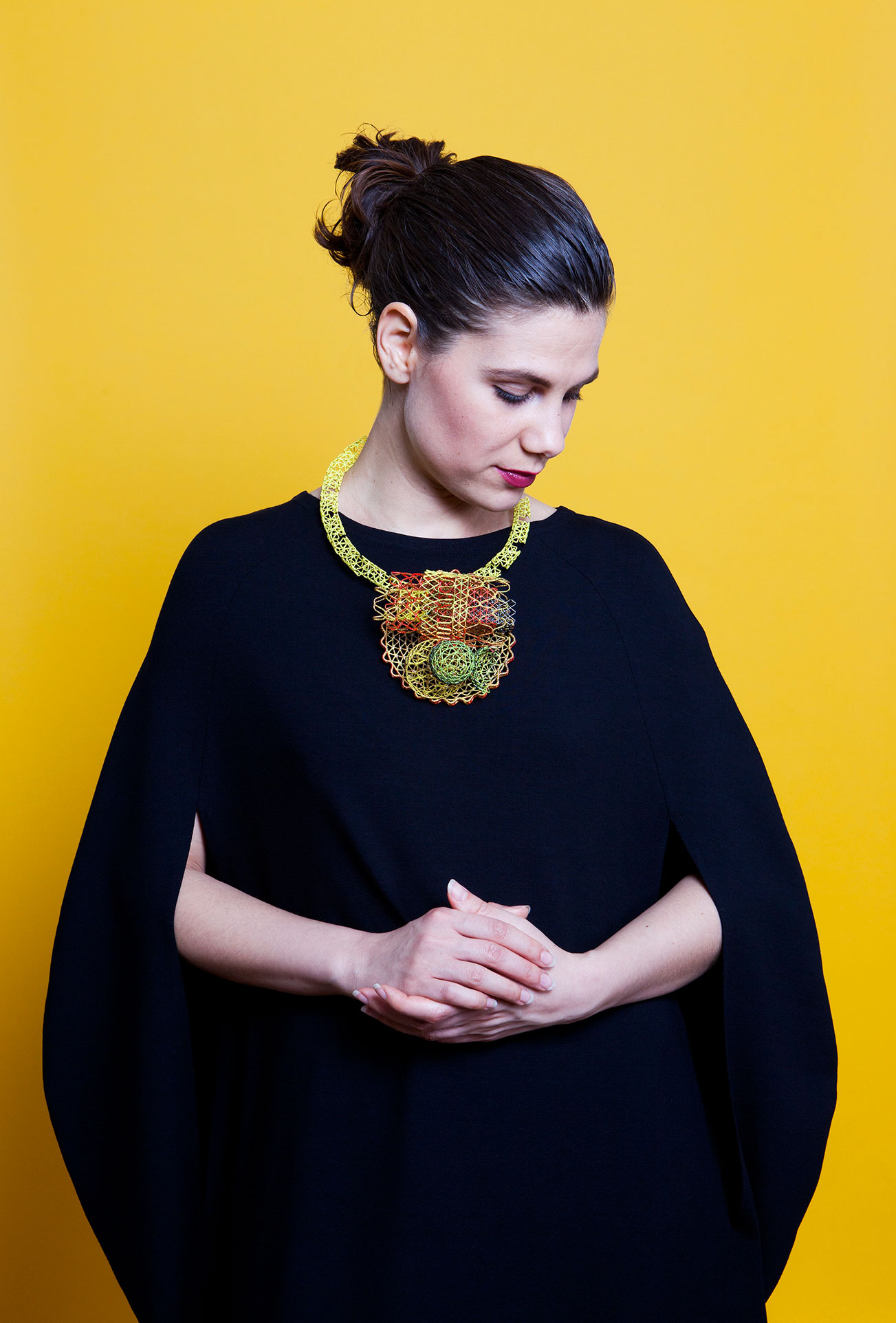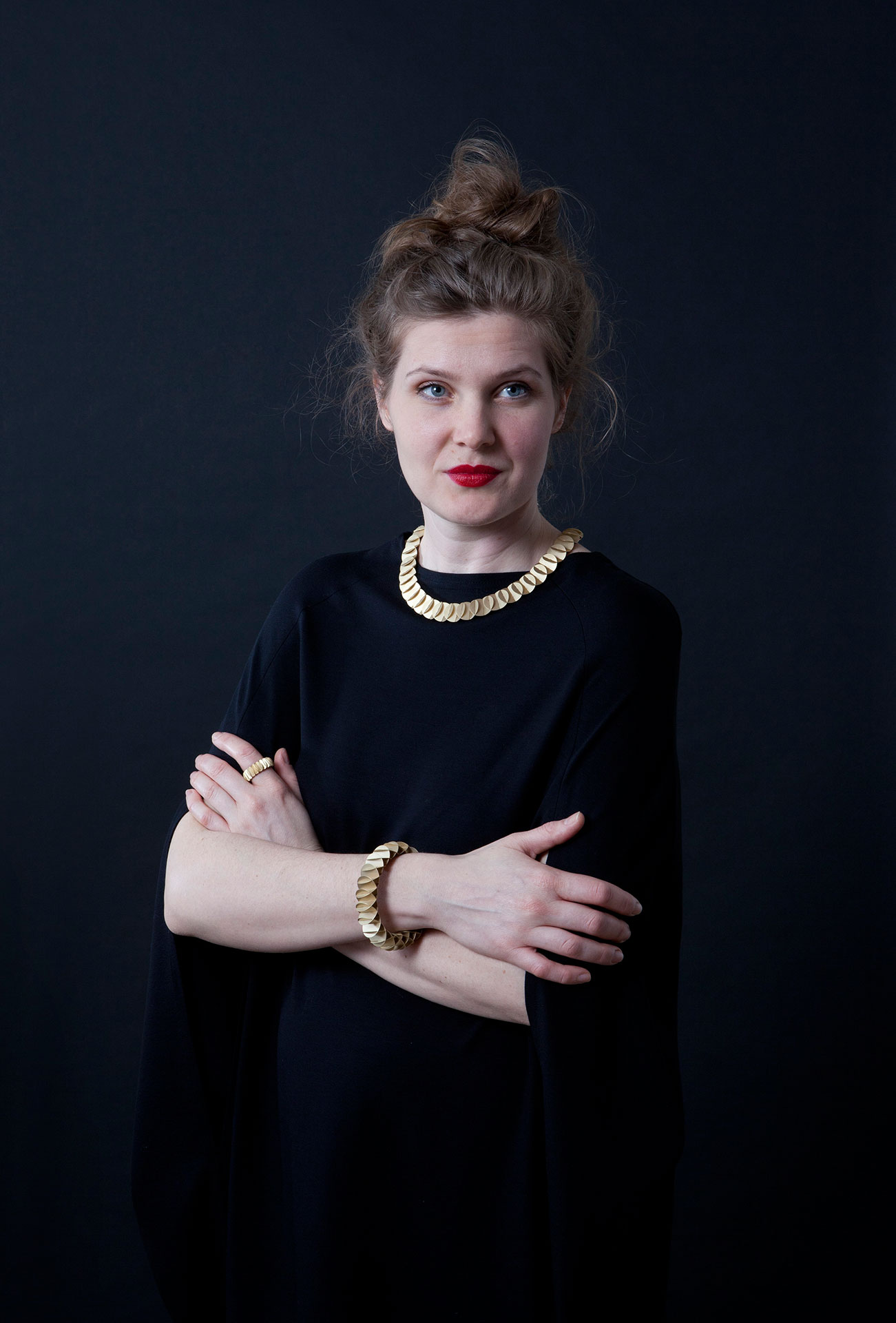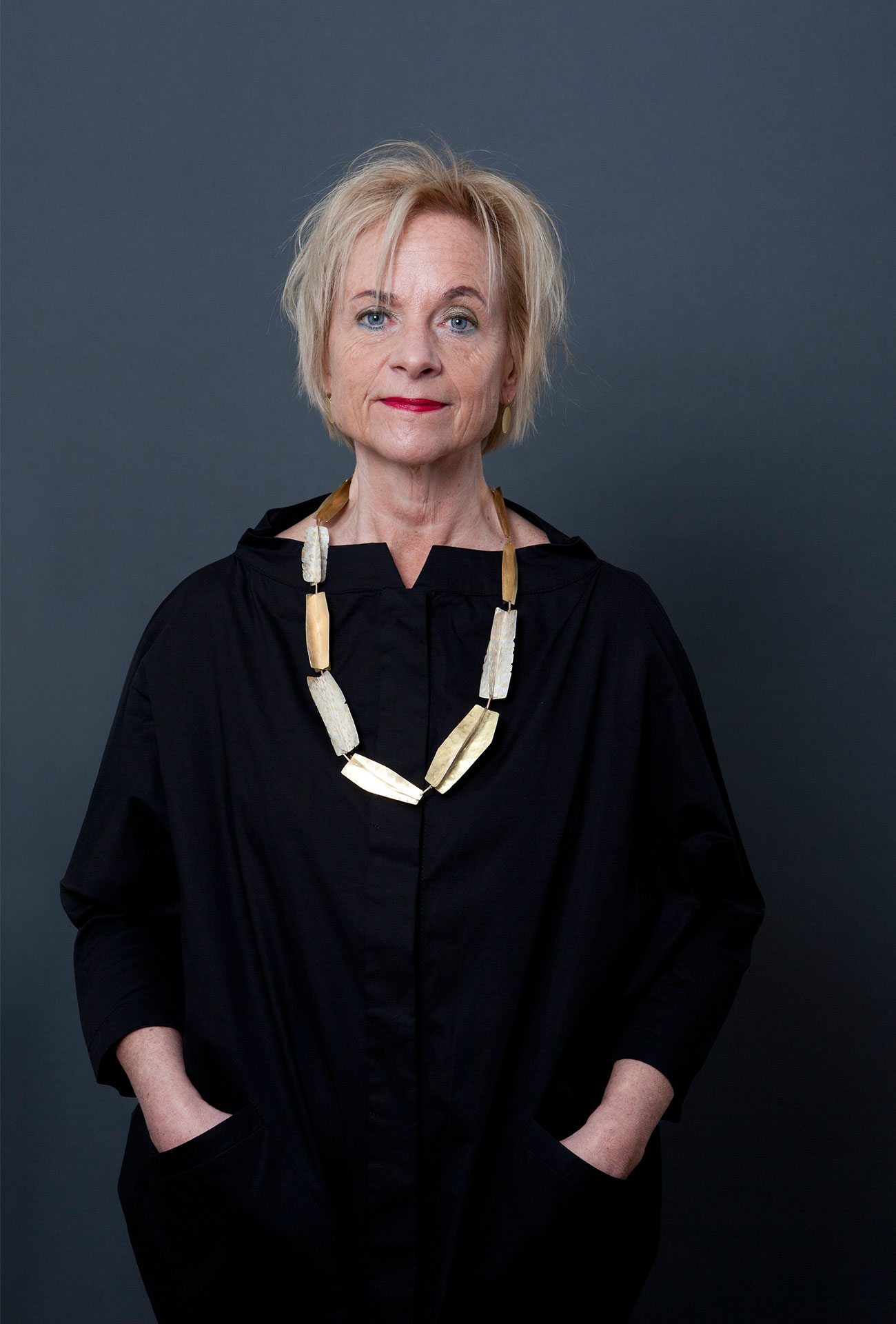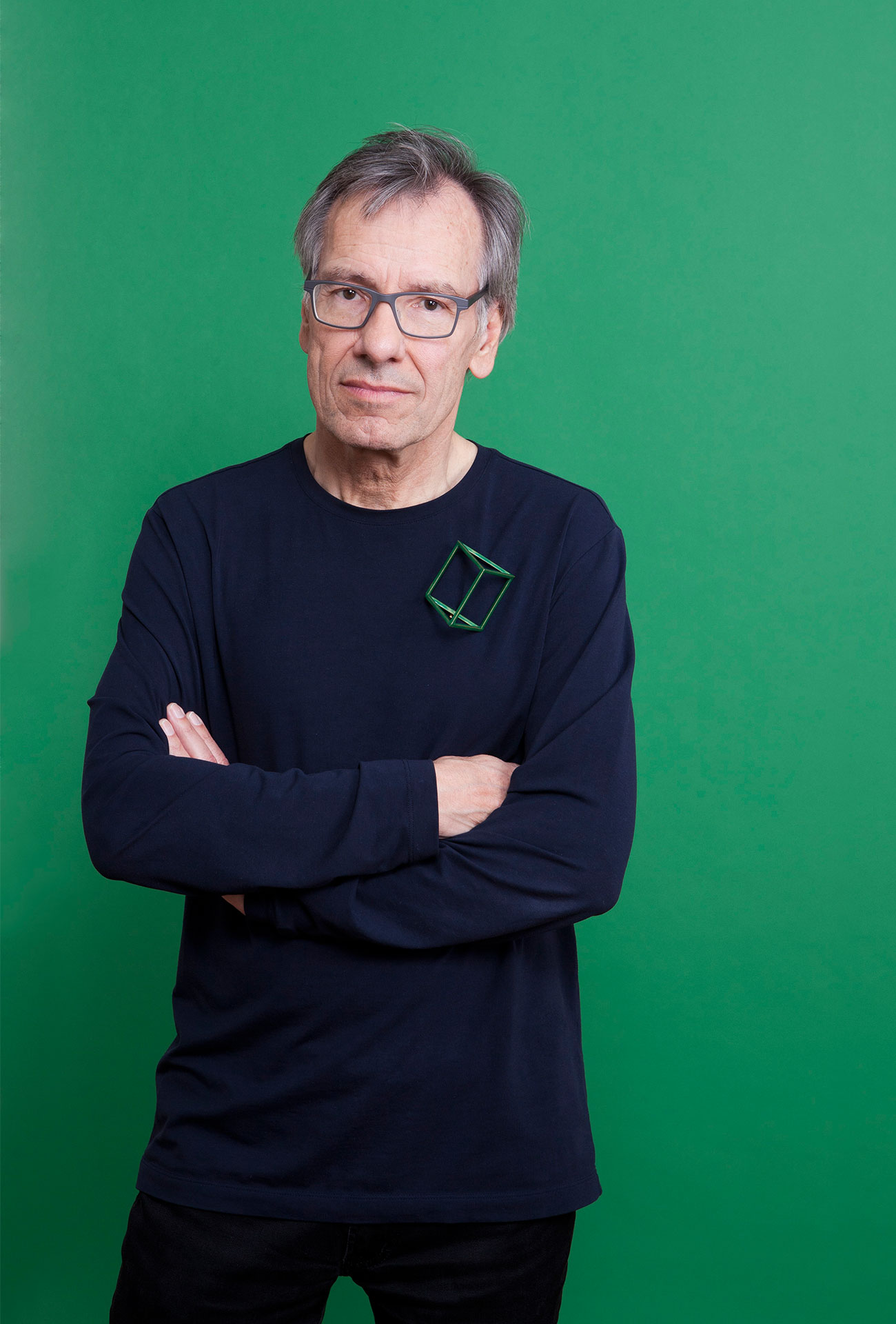The first edition of Art Aurea was published nearly thirty years ago in the fall of 1985. As the magazine’s editor, I visited Prof. Hermann Jünger’s jewelry and utensils class at the Academy of Visual Arts in Munich for the first time in 1986. Jünger formatively influenced art jewelry in Germany and far beyond its borders during his tenure at the Academy from 1972 to 1990. My young colleague Paulina Tsvetanova and I returned to the goldsmith’s class at the Academy on March 10, 2015 to prepare the “Who wears my art?” art-photo happening. Three stimulating days followed, full of wonderful moments for art jewelry. Professor Otto Künzli, who had succeeded Hermann Jünger as director from 1991 to 2015 and who was recently given emeritus status, led us through the various rooms. It was a touching moment. I recalled my first visit to the Academy nearly thirty years before, as well as my conversations with the marvelous teacher and human being Hermann Jünger, to whom Galerie Wittenbrink dedicated a one-man show during Munich Jewelry Days in 2015. The central theme of our discussions three decades ago was that jewelry too can be an art form.
Many of the people who recently participated in the three-day “Who wears my art?” happening likewise experienced that jewelry can indeed be art. Even those who encountered art jewelry for the first time immediately realized this fact. Many wearers understood that beyond its status as art, artistic jewelry also has another dimension all its own: it changes our silhouette, our posture and our appearance. Art jewelry challenges us, questions our preferences and our self-image, reveals our inner attitudes and awakens profound emotions. One of the participants began to weep while she was being photographed by Miriam Künzli because the piece of jewelry that she had selected and worn reminded her of the death of her partner. Jewelry almost always triggers something in the individuals whose portraits were created: it makes them thoughtful, prompts them to speak from the heart, to discover new insights or simply to feel cheerful. My personal choice was a brooch by Francesco Pavan: on the one hand, I chose it because I’m a minimalist, I love the color green, and I highly appreciate the artist from Padua; on the other hand, I picked this artwork because it was the last remaining piece. The finale of our wonderful art-photo happening follows.
Please note: There are five high-quality hand-signed photo prints of each of the 43 portraits. Each print measures 20 by 30 centimeters and costs 100 euros. All revenues from sales of the prints will be donated to Christian Springer’s Orienthelfer organization.

Masako Ohta with necklace by Gigi Mariani, silver, niello, gold, Isabella Hund gallery, and dress by Ilona Pelli.
Photo Miriam Künzli for Art Aurea.
“I was impressed by the clarity and flexibility. Every form can disappear, and then we have to look for it again. Just like in music, where we can’t hold on to the notes. I love the matte gold and its lightweight quality combined with the blackened silver’s anthracite hue. Even though it’s metal, it feels like wood.” Masako Ohta, Munich, pianist
“Being a designer in a skilled craft, it’s quite natural that I have an affinity for art and design. And being as tall as I am, I like anything big. What appeals to me concerning Paul Derrez’s brooch is its clear-cut shape, which, however, allows for various interpretations.” Wolfgang Zeilnhofer-Rath, Munich, member of the city council (“Hut” voter group), graduate social education worker, metalsmith

Carolina Camilla Kreusch with brooch by Reka Lörinz, Biro gallery. Photo Miriam Künzli for Art Aurea.
“I found this piece quite funny because it’s an everyday object. I’m generally fond of little boxes and containers. I like collecting small things, such as souvenirs and the stories associated with them. What’s actually going on is an increasing ‘canning of the world’. Everything is wrapped nowadays. Each time I wear jewelry is an experiment for me. I always wear earrings because I imagine hearing better with them.” Carolina Camilla Kreusch, Munich, sculptor

Pravu Mazumdar with brooch by Anja Eichler, silver, quail egg, wood, steel wire. Photo by Miriam Künzli for Art Aurea.
“I detect a power and beauty in the combination and heterogeneity of the materials that captivates me.” Pravu Mazumdar, Munich, philosopher

Paulina Tsvetanova with necklace by Robert Baines, Biro gallery, and dress by Ilona Pelli. Photo Miriam Künzli for Art Aurea.
“I love metamorphoses, self-staging and role play. As a new ‘face’ at Art Aurea, it’s especially important to me to be intimately familiar with the feeling of wearing and embodying jewelry so that I can also spark other peoples’ enthusiasm for contemporary art jewelry. I like to wear almost everything because I’ve fallen in love with the entire spectrum of art jewelry! I find it very inspiring right now to reveal new sides of my own personality through lively, diverse and wildly crazy pieces of jewelry.” Paulina Tsvetanova, Berlin, Marketing and Communications for Art Aurea

Angela Gilow with necklace by Nikolay Sardamov, silver, Isabella Hund gallery, and coat by Barbara Weigand, Iosoy, jacquard. Photo Miriam Künzli for Art Aurea.
“What I like about this pendant are its various shades and hues and that it goes well with my hair. The glistening surfaces of the silver, which I generally like to wear, also appeal to me. After I discovered this piece, I also found the right outfit to go with it.” Angela Gilow, Munich, owner of the Tading inn
“My grandmother Rosemarie Jäger strongly appreciates Ike Jünger as an artist. I feel very comfortable with this piece and I think it looks good on me.” Hannah, Hochheim im Taunus, student
“I’m impressed by this necklace’s minimalist simplicity, which at the same time is very reminiscent of nature. I also think it’s very important in our digitalized world that such pieces are so much the result of handcraftsmanship.” Christine Gallmetzer, Bolzano, artist and philosopher

Lynne Philippé with necklace, bangle and ring by Niessing and dress by Ilona Pelli. Photo Miriam Künzli for Art Aurea.
“I was surprised by the effect this jewelry has on me. As a jewelry artist, I create something entirely different. But this ring has a fantastic feel. The flexibility characterizing the pieces, in particular the ring and bracelet, plus the way the necklace snugly drapes around the neck, is fascinating.” Lynne Philippé, Düsseldorf, jewelry artist

Carin Reinders with necklace by Stefano Marchetti, 2014, gold, silver, Marzee gallery, Nijmegen, and dress by Ilona Pelli. Photo Miriam Künzli for Art Aurea.
“In terms of its materials, i.e. gold and silver, Stefano Marchetti’s necklace is a classic piece, yet it’s also a very contemporary creation.” Carin Reinders, Appeldoorn, director of the CODA Museum

Renate Merten with brooch by Bettina Dittlmann. Anna Pirk gallery. Photo Miriam Künzli for Art Aurea.
“I didn’t know about the idea behind this brooch representing the nuclear disaster at Fukushima. I was spontaneously captivated by its size, intense color and clarity. This kind of jewelry is nothing new to me. I also like to wear pieces like this in everyday life.” Renate Merten, Munich, event manager

Reinhold Ludwig with brooch by Francesco Pavan, silver, enamel, Rosemarie Jäger gallery. Photo Miriam Künzli for Art Aurea.
“I opted for this brooch created by Francesco Pavan for two reasons: on the one hand, I like its architectural, minimalist shape, as well as the color green, and on the other because I personally appreciate this pioneer of contemporary goldsmithing from Padua very much. While my portrait was being photographed, I realized how difficult it is to remain casual, relaxed and authentic in the process.” Reinhold Ludwig, Ulm, Art Aurea publisher
Text and interviews Reinhold Ludwig
Photos Miriam Künzli


